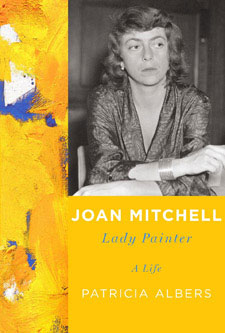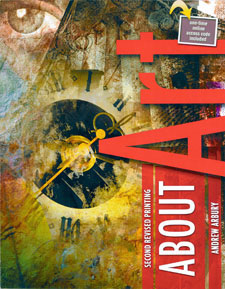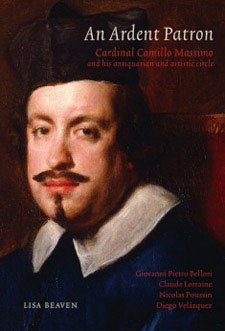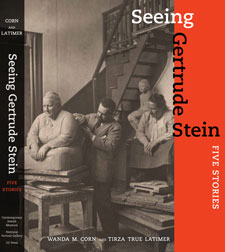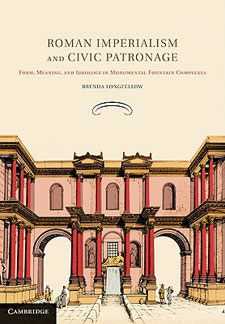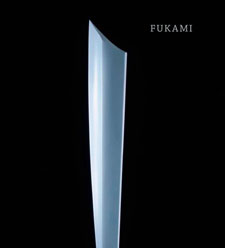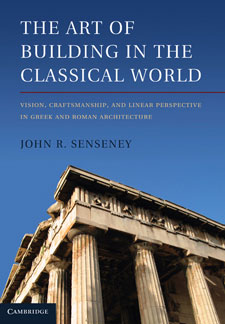CAA News Today
Books Published by CAA Members
posted by CAA — June 15, 2011
Publishing a book is a major milestone for artists and scholars—browse a list of recent titles below.
Books Published by CAA Members appears every two months: in February, April, June, August, October, and December. To learn more about submitting a listing, please follow the instructions on the main Member News page.
June 2011
Patricia Albers. Joan Mitchell, Lady Painter: A Life (New York: Alfred A. Knopf, 2011).
Andrew Arbury. About Art (Dubuque, IA: Kendall Hunt, 2011).
Lisa Beaven. An Ardent Patron: Cardinal Camillo Massimo and His Antiquarian and Artistic Circle (London: Paul Holbertson, in association with Centro de Estudios Europa Hispánica, 2010).
Wanda M. Corn and Tirza True Latimer. Seeing Gertrude Stein: Five Stories. (Berkeley: University of California Press; San Francisco: Contemporary Jewish Museum; Washington, DC, National Portrait Gallery, 2011).
Brenda Longfellow. Roman Imperialism and Civic Patronage: Form, Meaning, and Ideology in Monumental Fountain Complexes (New York: Cambridge University Press, 2010).
Andreas Marks, ed. Fukami: Purity of Form (Hanford, CA: Clark Center for Japanese Art and Culture, 2011).
John R. Senseney. The Art of Building in the Classical World: Vision, Craftsmanship, and Linear Perspective in Greek and Roman Architecture (New York: Cambridge University Press, 2011).
Spring Art Journal Features Artist’s Project by Paul Sietsema and Centennial Essay by Richard Shiff
posted by Christopher Howard — June 15, 2011
 CAA recently published the Spring 2011 issue of Art Journal, which includes a Centennial essay by the noted scholar Richard Shiff and, on the front and back covers, a project by the Los Angeles–based artist Paul Sietsema.
CAA recently published the Spring 2011 issue of Art Journal, which includes a Centennial essay by the noted scholar Richard Shiff and, on the front and back covers, a project by the Los Angeles–based artist Paul Sietsema.
The issue acknowledges CAA’s Centennial year with Shiff’s text, “Every Shiny Object Wants an Infant Who Will Love It,” a state-of-the-field essay on contemporary art. Beginning with the unfigured sensory experience of a Donald Judd installation in Marfa, Texas, the text examines the human impulse to organize and categorize the elements of aesthetic experience.
Paul Sietsema created two news works for the issue: Untitled Composition for the front cover and Painter’s Mussel for the back. Both are based on found photographs and slyly pun on the interplay between language and the working life of artists today.
The Spring issue also publishes an essay by Saloni Mathur that details the postcolonial context in which the American designers Charles and Ray Eames explored the traditional arts of India—and helped configure the industrial-design program of the newly emergent nation. Next, Christopher Bedford, chief curator of the Wexner Center for the Arts in Ohio, invited seven artists and curators to join him in pondering the peculiarities the art-speak word “project” (as used in the first paragraph of this news item). While some see it as a useful term, others find darker implications in its widespread use.
An essay by Karen Kurczynski called “Drawing Is the New Painting” suggests that the pressures of the contemporary marketplace can jeopardize drawing’s characteristics of expression and immediacy. In a monographic study titled “City of Degenerate Angels,” Ken D. Allan traces the art and publishing efforts of Wallace Berman in the context of the 1950s Los Angeles jazz scene in which the artist came of age. Additional audio evidence for Allan’s argument appears on the Art Journal website.
The Reviews section of the issue, edited by Howard Singerman, contains Michael Corris’s analysis of Julia Bryan-Wilson’s book, Art Workers: Radical Practice in the Vietnam War Era, and Alzo David-West’s assessment of two publications about art and visual culture in North Korea.
Report from the May 2011 Board of Directors Meeting
posted by Linda Downs — June 14, 2011
The CAA Board of Directors held its second meeting of the year in New York on Sunday, May 1, 2011 at the offices of the law firm Debevoise & Plimpton LLC in Manhattan. President Barbara Nesin welcomed the four newly elected board members—Leslie Bellavance, Denise Mullen, Saul Ostrow, and Georgia Strange—who were attending their first meeting. Nesin also recognized Anne-Imelda Radice, who recently joined the board as an appointed director. In addition, new officers began their one-year appointmentat the May meeting (see the board list for all names, titles, and affiliations).
The board reviewed a three-year budget projection for CAA for fiscal years 2012–14 and approved the fiscal year 2012 budget. This is the first time that CAA staff has developed a multiyear budget projection in order to better plan and effect positive changes for the future. The 2012 budget includes: an increase in staff for publications, membership, and information technology; a professional analysis of the journals to determine the feasibility of transitioning to electronic formats for The Art Bulletin and Art Journal and to prepare a business plan for practical publications; and increased funds for Professional-Development Fellowships for artists and art historians.
Linda Downs, CAA executive director, presented an overview of recent advocacy initiatives and recommendations for greater board and member participation. Andrea Kirsh, former vice president for external affairs, is assisting the organization on advocacy issues by researching and preparing public statements in cooperation with the executive director and legal counsel. The board agreed to clarify CAA’s position in support of the proposed legislation on orphan works and to publicly post a statement that can also be sent to art schools and art departments.
The board approved a resolution to use online voting in the annual election of directors to the board, eliminating paper ballots. (CAA had employed both formats for several years.) Concerned about the low number of members who vote in elections, the group considered strategies to address the issue. Surveys of members indicate that the primary reason they do not vote is because they do not know the candidates. CAA currently provides short videos from the candidates as well as written statements and biographies that describe their backgrounds and their interests in serving on the board. CAA also reminds members to vote through email messages. The board welcomes suggestions on how to increase voter participation (see below for contact information).
Patricia McDonnell, who led the Task Force on Practical Publications, presented a resolution to develop a business plan to launch practical publications. The board approved the resolution , and the business plan will become part of the professional analysis of the journals to be carried out in the next two years.
Anne Collins Goodyear, who led the Task Force on Editorial Safeguards and Procedures, presented a resolution to revise CAA’s statement on conflict of interest. The amendment specifically addressed procedures for editors and added language about the importance of confidentiality. The new Statement on Conflict of Interest and Confidentiality, published last month, will be read and signed annually by board members, journal editors, committee members, and award jurors.
The board welcomes conversations on any question or issue related to the association and invites members to submit agenda items to the board and to the Annual Members’ Business Meeting. Send your ideas and suggestions to Vanessa Jalet, CAA executive assistant. Upcoming board meetings are scheduled for: Sunday, October 23, 2011, in New York; and Sunday, February 26, 2012, in Los Angeles, a day after the Annual Conference. The business meeting will be held on Friday, February 24, 2012, during the Los Angeles conference.
You may also read about two previous board meetings, held in October 2010 and February 2011.
Apply for a Meiss or Wyeth Publishing Grant
posted by CAA — June 13, 2011
CAA is offering two publishing-grant opportunities this fall—through the Millard Meiss Publication Fund and the Wyeth Foundation for American Art Publication Grant—that support new books in art history and related subjects. The publisher must submit the application to either grant or to both funds, though only one award can be given per title. Awards are made at the discretion of each jury and vary according to merit, need, and number of applications. Both programs have a deadline of October 1, 2011. CAA will announce the recipients of the Meiss and Wyeth grants in late November or early December 2011.
Millard Meiss Publication Fund
CAA awards grants from the Millard Meiss Publication Fund to support book-length scholarly manuscripts in the history of art and related subjects that have been accepted by a publisher on their merits but cannot be published in the most desirable form without a subsidy. For complete guidelines, application forms, and a grant description, please visit www.collegeart.org/meiss or write to nyoffice@collegeart.org. Deadline: October 1, 2011.
Wyeth Foundation for American Art Publication Grant
Thanks to generous funding from the Wyeth Foundation for American Art, CAA awards a publication grant to support book-length scholarly manuscripts in the history of American art and related subjects. For purposes of this program, “American art” is defined as art created in the United States, Canada, and Mexico prior to 1970. Books eligible for the Wyeth Grant have been accepted by a publisher on their merits but cannot be published in the most desirable form without a subsidy. For complete guidelines, application forms, and a grant description, please visit www.collegeart.org/wyeth or write to nyoffice@collegeart.org. Deadline: October 1, 2011.
Committee on Women in the Arts Picks for June 2011
posted by CAA — June 10, 2011
Each month, CAA’s Committee on Women in the Arts selects the best in feminist art and scholarship. The following exhibitions and events should not be missed. Check the archive of CWA Picks at the bottom of the page, as several museum and gallery shows listed in previous months may still be on view or touring.
June 2011
“Women and the Arts: Dialogues in Female Creativity in the U.S. and Beyond”
June 15–17, 2011
University of Lisbon Centre for English Studies
Centro de Saúde de Sete Rios, Lisbon, Portugal 1600-214
This three-day international gathering, organized by the American Studies Group of the University of Lisbon Centre for English Studies, will promote a reflection on women’s artistic production, contrasting the US context with other cultures. Featured sessions address such topics as “Dreaming, Doing, Being, & Seeing: The Woman Artist as Seen, Invisible, Witnessed and Observer”; “Women and the Crafts”; “Performance Arts”; “Art and Gender Politics”; “Portraits of the Artist as Woman”; “Women in Contemporary Art in the U.S. and Beyond”; and “Boundaries and Crossings in Theory and Art.”
!Women Art Revolution
Various locations across the United States
This eight-three-minute documentary film, directed by Lynn Hershman Leeson (and a CWA Pick in January 2011), relates the feminist art movement to the 1960s antiwar and civil rights causes and explains how historical events sparked feminist actions against major cultural institutions. Detailing major developments in women’s art of the 1970s, the film looks at early feminist art-education programs, political organizations and protests, and alternative art spaces such as A.I.R. Gallery and Franklin Furnace in New York and the Women’s Building in Los Angeles. Leeson also turns her attention to publications such as Chrysalis and Heresies and to landmark exhibitions, performances, and installations of public art that changed the direction of contemporary art.
In June, the following theaters and cultural institutions will screen the film:
- June 1–8: IFC Center, 323 Avenue of the Americas, New York, NY 10014
- June 2: Manhasset Cinemas, Gold Coast International Film Festival, 430 Plandome Road, Manhasset, NY 11030
- June 2–9: West End Cinema, 1 M Street NW, Washington, DC
- June 3: New Hyde Park Cinemas, Gold Coast International Film Festival, 3324 Hillside Avenue, New Hyde Park, NY 11040
- June 10: Institute of Contemporary Art, 100 Northern Avenue, Boston, MA 02210
- June 10: The Screen, Santa Fe University of Art and Design, 100 Saint Michaels Drive, Santa Fe, NM 87505
- June 14: Billy Wilder Theater, Hammer Museum, 10899 Wilshire Boulevard, Los Angeles, CA 90024
- June 15–19: Museum of Fine Arts, 100 Huntington Avenue, Boston, MA 02116
- June 17–23: Laemmle’s Music Hall 3, 9036 Wilshire Boulevard, Beverly Hills, CA 90211
- June 17–23: Northwest Film Forum, 1515 Twelfth Avenue, Seattle, WA 98122
- June 23–26: Noble Theater, Oklahoma City Museum of Art, 415 Couch Drive, Oklahoma City, OK 73102
- June 24–27: Northwest Film Center, 1119 Southwest Park Avenue, Portland, OR 97205
- June 24–30: Denver FilmCenter, Denver Film Society, 2601 Blake Street, Denver, CO 80205
- June 24–30: Real Art Ways, 56 Arbor Street, Hartford, CT 67401
- June 24–30: Salina Art Center, 150 South Santa Fe, Salina, KS 67401
Talks by the director and guest speakers—such as Howardena Pindell and Carey Lovelace in New York, Carrie Brownstein in Portland—and other special events will accompany selected screenings.

Guerrilla Girls, Untitled, from the series Guerrilla Girls Talk Back: The First Five Years, 1985–1990, 1986, color photolithograph on paper, 17 x 22 in. National Museum of Women in the Arts, Gift of Steven Scott, Baltimore, in honor of Wilhelmina Cole Holladay (artwork © Guerrilla Girls; photograph provided by the National Museum of Women in the Arts)
The Guerrilla Girls Talk Back
June 17–October 2, 2011
National Museum of Women in the Arts
1250 New York Avenue NW, Washington DC 20005
The Guerrilla Girls—anonymous females who take the names of dead women artists and appear in public wearing gorilla masks—use humor to expose sexism and racism in the art world, film, politics, and culture at large. This exhibition presents posters and ephemera from the group, including works from two portfolios, Guerrilla Girls Talk Back: The First Five Years, 1985–1990 and Guerrilla Girls Talk Back: Portfolio 2.
Tracey Emin: Love Is What You Want
May 18–August 29, 2011
Hayward Gallery
Southbank Centre, Belvedere Road, London SE1 8XX, England
The first major survey in London of Tracey Emin’s work occupies both floors and two outdoor sculpture terraces at the Southbank Centre. Works from every period of her career and in diverse media—painting, textiles, work on paper, photography, neon, film, and sculpture—will accompany a new series of outdoor sculptures made especially for the Hayward Gallery installation.
National Coalition Against Censorship Posts Video of “Policing the Sacred”
posted by Christopher Howard — June 09, 2011
The National Coalition Against Censorship has edited video of “Policing the Sacred: Art, Censorship, and the Politics of Faith,” a session held during the 2011 CAA Annual Conference in New York, and posted it on YouTube in two parts. Links to the videos appear below.
In recent decades, the volatile relationships among art, politics, and religion have only intensified, as evident in the Culture Wars of the 1990s in the United States, the Danish cartoon uproar, and ongoing battles over artistic depictions of religious figures, including the recent removal of a David Wojnarowicz video from an exhibition at the National Portrait Gallery. This panel, moderated by Eleanor Heartney, an art critic and the author of Postmodern Heretics: The Catholic Imagination in Contemporary Art, brought together five artists and advocates who discussed the above issues and more.
Participating were Richard Kamler, an artist and educator whose installation of intertwined pages from the Koran and the Torah incited controversy in New Haven in 2010; the Bulgarian video artist Boryana Rossa, who spoke on behalf of her husband, Oleg Mavromatti, currently wanted by Russian authorities for “inciting religious hatred” through a performance in which he had himself crucified; Iranian artists and filmmakers Shirin Neshat and Shoja Azari, who recently completed Women without Men, a film that evokes the religious, social, and political tensions surrounding the 1953 coup that brought the Shah to power; and Svetlana Mintcheva, NCAC director of programs, who recently wrote “Hide/Seek: Museums, Ethics, and the Press: A Symposium Report” for CAA.
In addition, the artist Joy Garnett reviewed “Policing the Sacred” for CAA’s 2011 Annual Conference Blog.
Watch the Video
caa.reviews Publishes Dissertations Completed and In Progress
posted by Betty Leigh Hutcheson — June 08, 2011
caa.reviews has just published the authors and titles of doctoral dissertations in art history and visual studies—both completed and in progress—from US and Canadian institutions for calendar year 2010. Titles can be browsed by subject, such as Art of the Middle East/North Africa, Latin American/Caribbean Art, or Contemporary Art. Each institution granting the PhD in art history and/or visual studies submits dissertation titles once a year to CAA for publication. The listing in caa.reviews also includes dissertations completed and in progress between 2002 and 2009, making them available through web searches.
Propose a Session for the 2013 Annual Conference in New York
posted by Lauren Stark — June 07, 2011
CAA invites individual members to propose a session for the 101st Annual Conference, taking place February 13–16, 2013, in New York. Proposals should cover the breadth of current thought and research in visual art, art and architectural history, theory and criticism, pedagogical issues, museum and curatorial practice, conservation, and developments in technology.
The submission process will open on Monday, June 27, 2011. For full details on the submission process for the conference, please review the information published on the Chair a 2013 Annual Conference Session webpage.
The Annual Conference Committee welcomes session proposals from established artists and scholars, along with those from younger scholars, emerging and midcareer artists, and graduate students. Particularly welcome are proposals that highlight interdisciplinary work. Artists are especially encouraged to propose sessions appropriate to dialogue and information exchange relevant to artists.
You will complete and submit your session proposal online; paper forms and postal mailings are not required. To set up an account in CAA’s content-management system, please email Lauren Stark, CAA manager of programs, who will register your email address and provide you with a password. Deadline: September 1, 2011; no late applications are accepted.
Documenta Website Posts Audio of CAA Centennial Session on “Feminism”
posted by Christopher Howard — June 02, 2011
Audio of the 2011 CAA Centennial Session on “Feminism,” chaired by Norma Broude of American University and Griselda Pollock of the University of Leeds, has been uploaded to the website of Documenta, the major international art exhibition that takes place every five years in Kassel, Germany. The next one, Documenta 13, is scheduled for June 9–September 16, 2012, and its website has become a repository for news on preliminary events and happenings as well as a forum for discussing timely issues in the art world. Its artistic director, Carolyn Christov-Bakargiev, a panelist in the “Feminism” session, arranged to have the 2½-hour audio recording posted to the Documenta website, where it will be permanently archived and available to promote discussion among a worldwide array of visitors to that site.
The CAA session was organized as two panels: the first on “Attaining Full Equality: Women, Artists, Museums, and Markets,” moderated by Broude, and the second on “New Directions and International Perspectives in Feminist Art History,” led by Pollock. After four decades of feminist scholarship and political activism in the art world, and on the occasion of CAA’s centenary, the session brought together a cross-generational and international group of museum-affiliated curators, international art-fair and exhibition organizers, art-market experts, and art historians to share their perspectives on present accomplishments, institutional impediments, productive strategies, and future frontiers for feminism’s creative enterprise.
Spring Grant Recipients of the Millard Meiss Publication Fund
posted by Christopher Howard — June 01, 2011
This spring, CAA awarded grants to the publishers of five books in art history and visual culture through the Millard Meiss Publication Fund. Thanks to the generous bequest of the late Prof. Millard Meiss, the grants are given to support the publication of scholarly books in art history and related fields.
The five grantees for spring 2011 are:
- Elizabeth Childs, Vanishing Paradise: Art and Exoticism in Colonial Tahiti, 1800–1901, University of California Press
- Shih-shan Susan Huang, Picturing the True Form: Daoist Visual Culture in Medieval China, Harvard University Asia Center
- Patricia Leighten, A Politics of Form: Art, Anarchism, and Audience in Avant-Guerre Paris, University of Chicago Press
- Pamela Patton, Art of Estrangement: Redefining the Jews in Reconquest Spain, Pennsylvania State University Press
- Richard Taws, The Politics of the Provisional: Visual Culture in Revolutionary France, Pennsylvania State University Press
Books eligible for Meiss grants must already be under contract with a publisher and on a subject in the visual arts or art history. Authors must be current CAA members. Please review the application guidelines for more information. The deadline for the fall 2011 grant cycle is October 1, 2011.




